From Mirador del Valle, you watch as the sunset casts its orange glow on the Alcázar towering above a maze of cobblestone roads that wind through a hillside covered in tiers of colorful Spanish buildings. The still waters of the Tagus River wrap around this picturesque hill and slowly flow under the medieval bridges that welcome the modern day visitor. As the sky darkens, yellow lights twinkle among the hundreds of buildings creating a brilliant, yet silent setting where you can’t help but to reflect on the beauty and history of this surreal landscape.
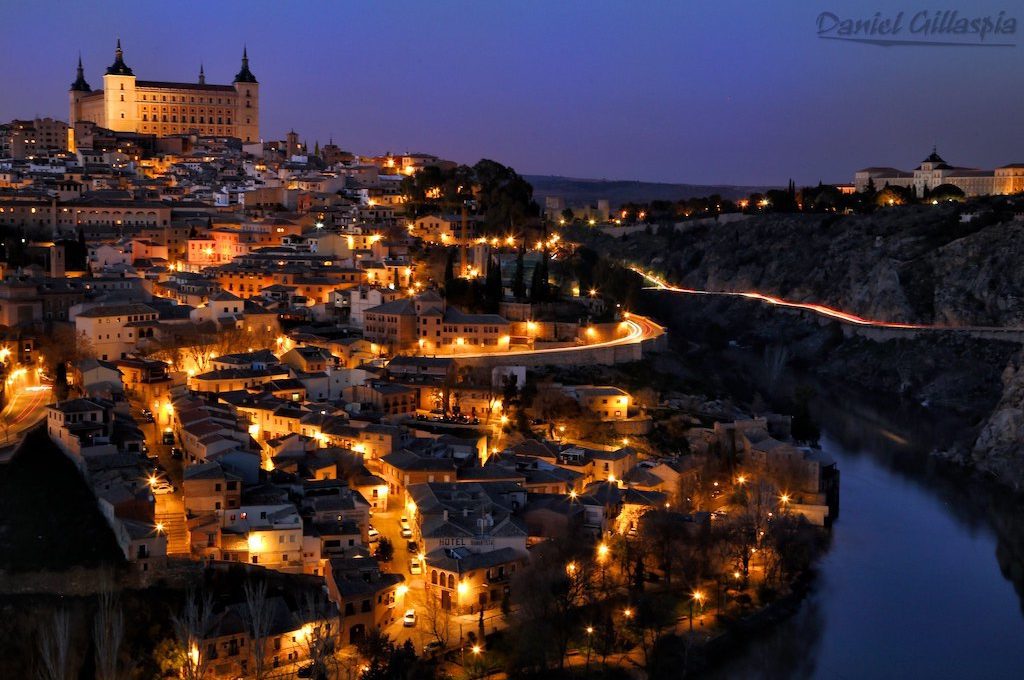
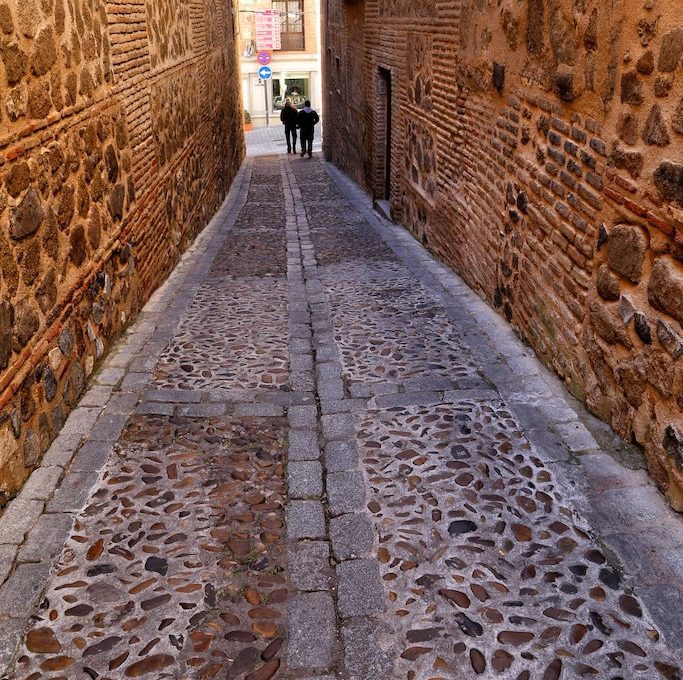
Centuries of human history are felt from the moment you step through the decorative arches of the Puente de San Martín, a stone-brick bridge dating back to the late 14th century. As you make your way uphill towards the city center, cars zip around narrow alleys where sidewalks unexpectedly dwindle into thin curbs until completely disappearing into the cobblestoned roads. Churches and cathedral spires emerge into view as you zig-zag further towards the clamoring of other tourists strolling through the many shops with walls covered in intricately designed ceramic plates and windows lined with endless rows of shiny swords made from some of the finest sword-makers in the world.
Tip: Use WalletFlo for all your credit card needs. It’s free and will help you optimize your rewards and savings!
The rich history of the city goes back to the 5th century BC, when Jewish inhabitants first settled there and named the city, Ṭulayṭulah. It later served as an important colony for the Romans, Visigoths, and Moors as each civilization rose and fell with power. Eventually, it was the Christians who took lasting control over the city in the 11th century, led by Alfonso VI. For centuries to follow, Toledo remained a major cultural hub and even served as the capital of Spain until it peaked in both its population growth and political importance and the capital eventually relocated to Spain. Toledo’s political decline is likely what saved the city, however — for it allowed for the preservation of the city as it was largely forgotten about by the outside world.
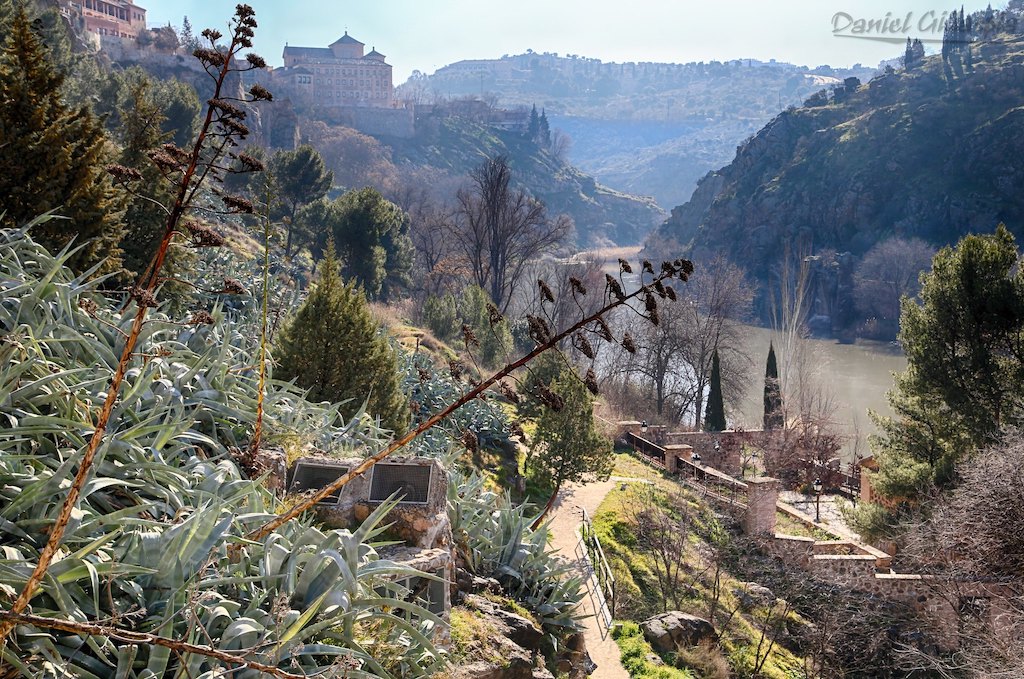
The cultural history is reflected throughout the city’s architecture. Medieval works are found in the roads, walls, and castles, such as the Castillo de San Servando. Morrish roots are revealed in several mosques and the Toledo Cathedral, dating back to the 13th century, displays the city’s Roman Catholic history and is one of the best examples of Gothic architecture in all of Spain. Museums are found throughout the city, with the Museo de Santa Cruz and El Greco Museum showcasing some of the finest works of the famous artist, El Greco, a brilliant mind years ahead of his Spanish Renaissance counterparts who is regarded as a precursor of both Expressionism and Cubism. El Greco discarded the traditional artistic norms of form and replaced them with dramatic and colorful scenes that largely went unappreciated for centuries until the late 18th century.
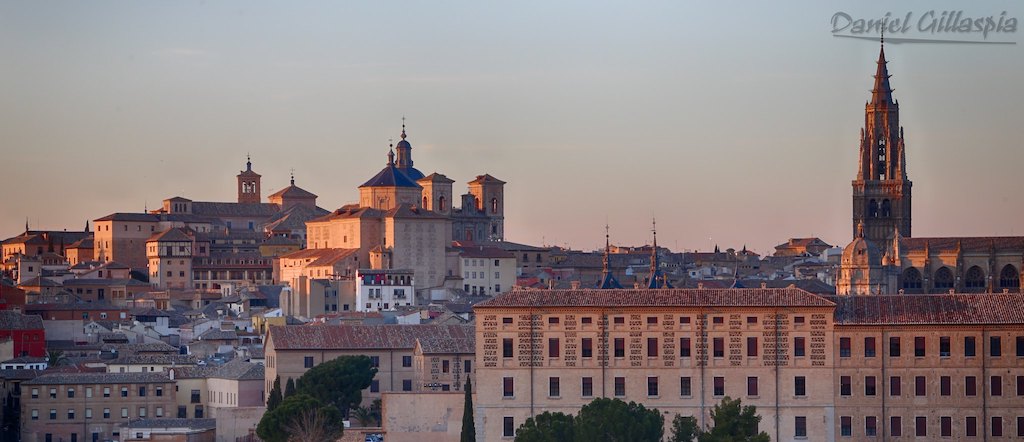
Between the churches, museums, restaurants, and shops offered in Toledo you might expect to feel overwhelmed with options that couldn’t possibly be fit into a day-trip’s itinerary. But you don’t have to see every museum and cathedral here to get the most of this place. Just popping in and out of shops, walking through the tight pebbly alleyways, and marveling at the gold and brown bricked buildings — their potted plants hanging from elegantly designed Juliet balconies below their ceramic tiled roofs — will keep you captivated for hours.
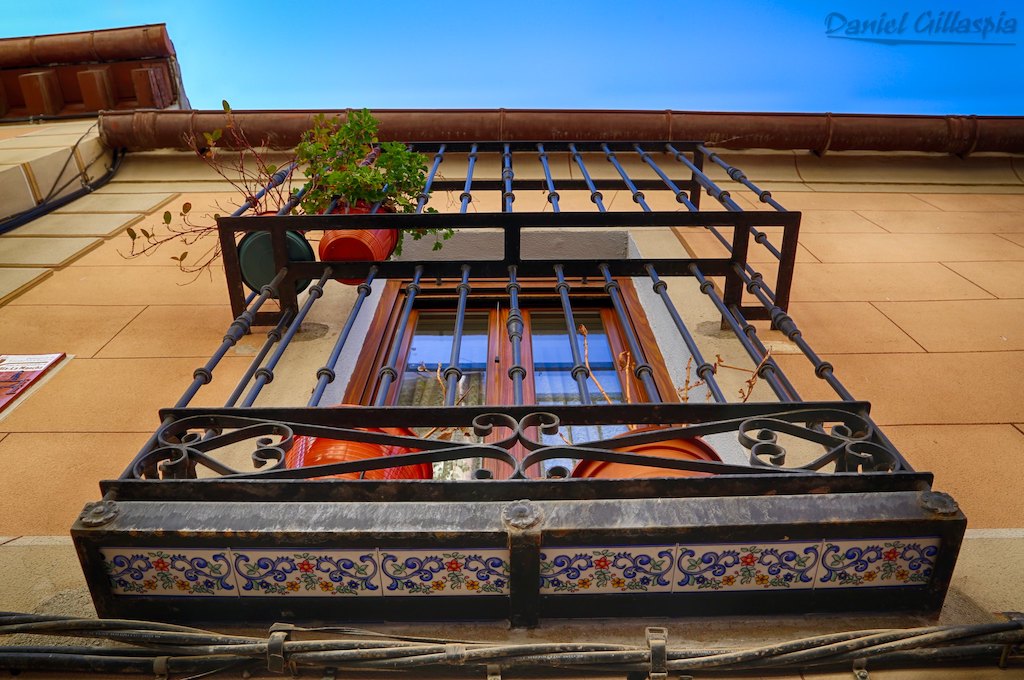
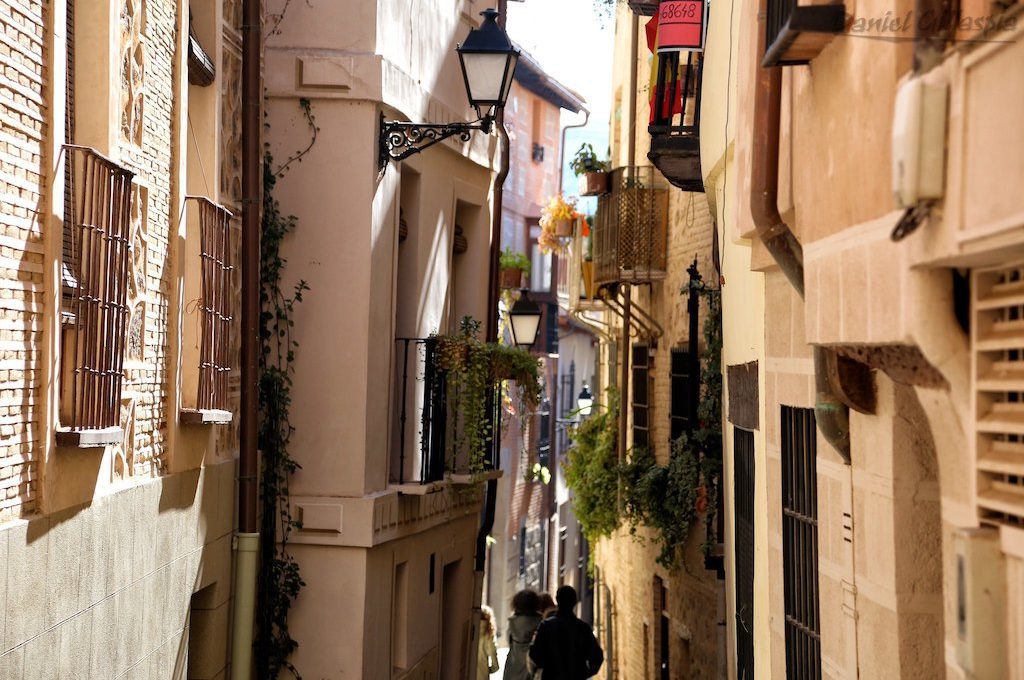
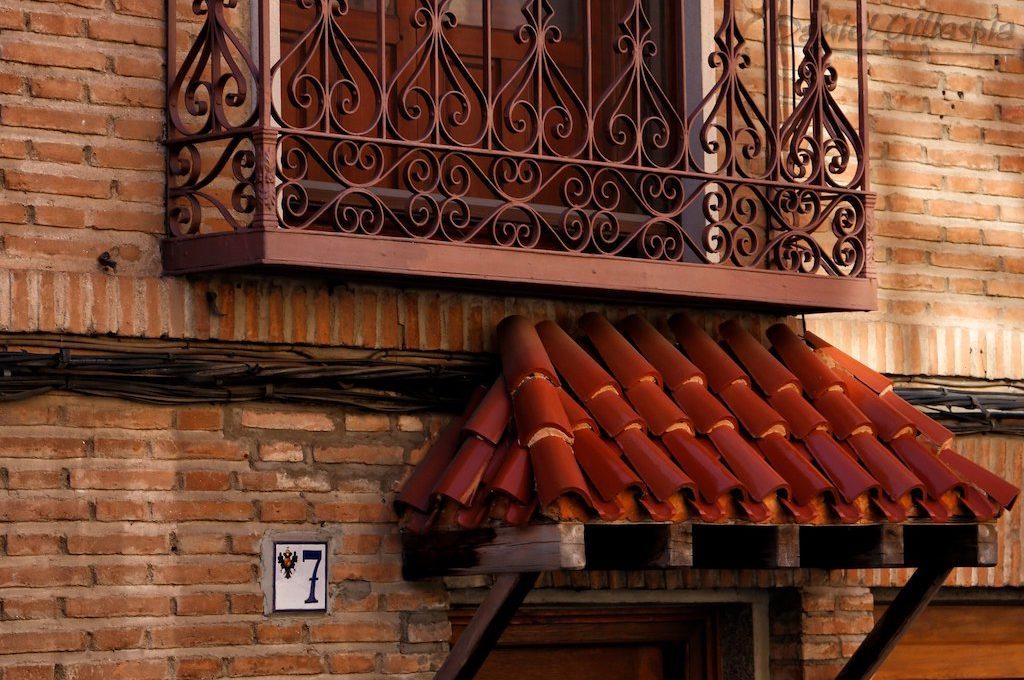
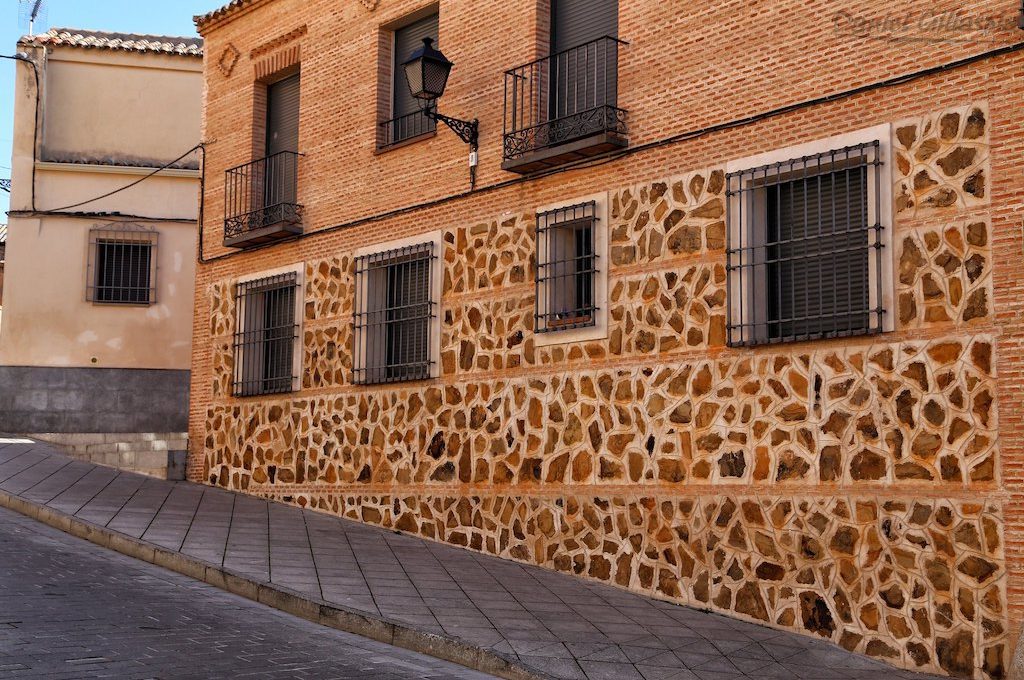
As soon as your feet begin to tire from trekking up and down these hilly paths, it’s time to slip into one of the many cafes or restaurants found amid the labyrinth of roads. Toledo’s long been heralded for the variety of game meat and it’s easy to find the likes of quail, deer, or lamb in a number of different forms from fried, roasted, to baked. And of course pork and plenty of seafood paella dish options abound at just about every corner. Just try to save some room for dessert.
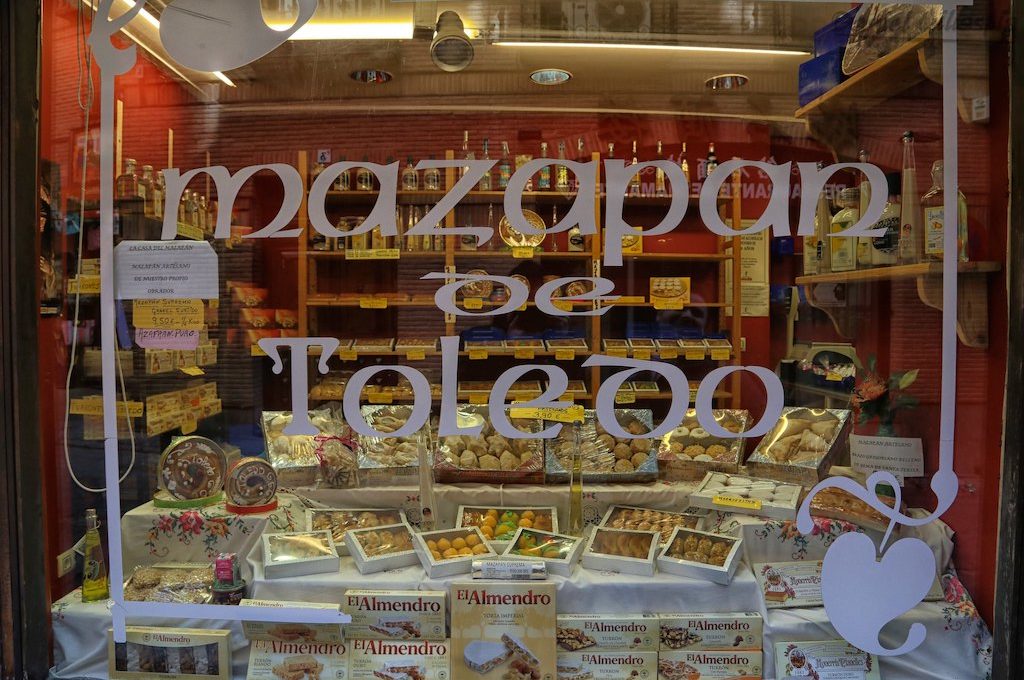
Bakeries are found throughout the city with boxes and rows of different sweets and treats presented in bright displays behind their windows, but without a doubt the most coveted of the sweets here — that every visitor to Toledo must try — is the marzipan. It’s a rich treat, made mostly of sugar, honey, and almond meal. It’s not uncommon to see marzipan in a number of different designs taking the shape of pigs or combined with fruit flavors and coming in the shape of small watermelons or bananas. It tastes extremely rich and filling, even in small doses, so taking it to go right after a big lunch may be your best bet.
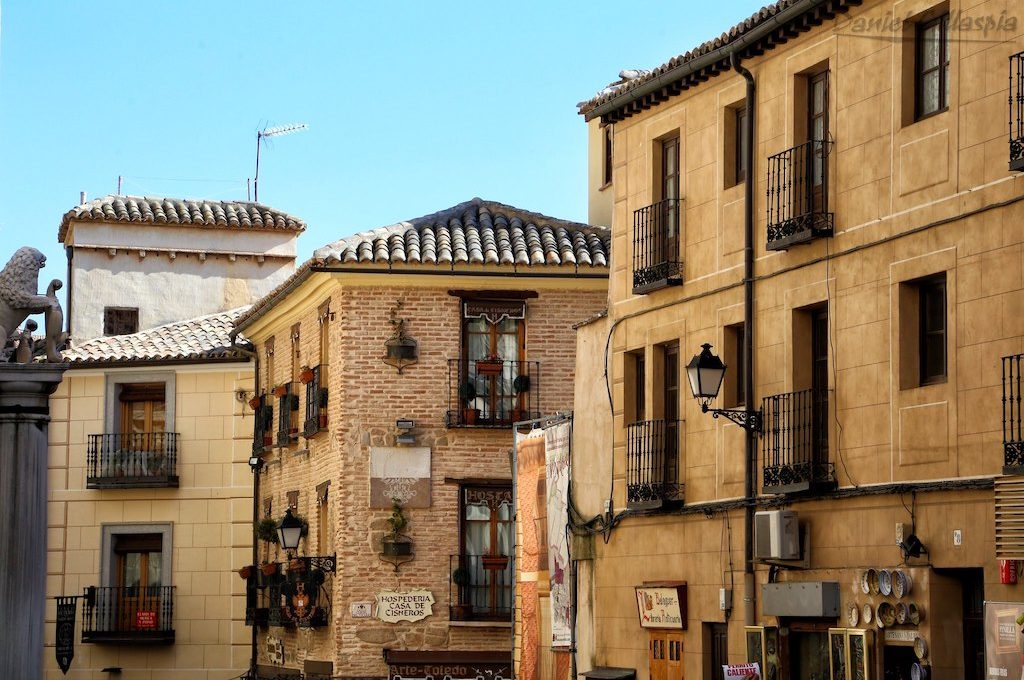
After a few meals and exploring the many shops and cathedrals, at some point you’ll surely make your way to the highest point in the city where the Alcázar rises above the city. The Romans used it as a palace back in the third century, though it underwent several changes through the centuries including a restoration in the 16th century. In the 1930s, this is where the Siege of the Alcázar took place, which was an important victory for the Nationalist forces in the beginning of the Spanish Civil War. The Nationalists saw the Alcázar as a structure that symbolized the strength of Spain and thus their victory helped propel morale and further confidence in their forces as they ultimately went on to defeat the Spanish Republicans in the war.
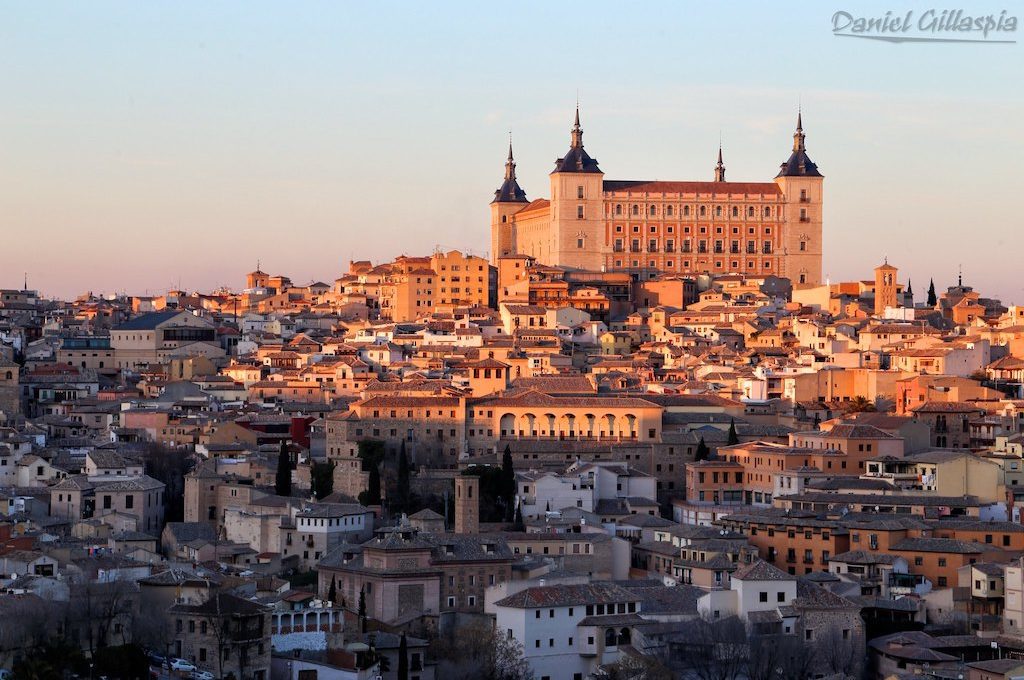
Today, Toledo is the capital of the autonomous region of Castilla-La Mancha. Since being designated a world heritage site and being home to several national monuments, Toledo has become relevant once again and thrives on the many tourists it welcomes each year. You likely you won’t be able to escape the tourist herds when you visit Toledo but this city is one of those unique places where the rich history that’s felt as you wander about the magnificent buildings displaces any annoyances that typically come with tourist territory. It’s a special place, no doubt, and one that will leave a lasting impression on you after even only one long afternoon visit.
Click here to book a day trip to Toledo from Madrid.
Daniel Gillaspia is the Founder of UponArriving.com and the credit card app, WalletFlo. He is a former attorney turned travel expert covering destinations along with TSA, airline, and hotel policies. Since 2014, his content has been featured in publications such as National Geographic, Smithsonian Magazine, and CNBC. Read my bio.

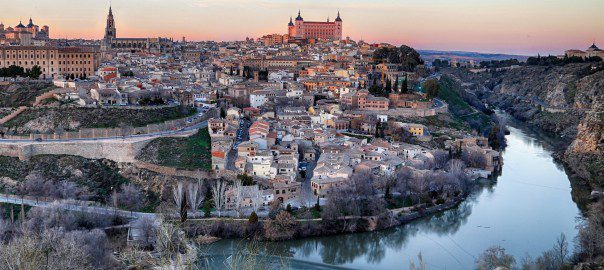
So beautiful pictures! It looks amazingly romantic. Thank your for introducing.
Thanks, Toledo is definitely one of the most romantic places I’ve seen to date!
I loved the narrow streets of Toledo! It’s got a certain type of magic to it. I can just imagine how charming it must’ve been to live there in the height of its time!
Totally agree. I couldn’t help but feel a little like Aladdin walking through its streets and alleyways while exploring the town. One of the highlights of Spain, for sure!
Hi, Daniel. Outstanding images! Truly inspiring! I’m traveling to Spain next week. I’ve been able to remotely scout what I think will be some great, specific locations for photography, but I’ve been vexed by the POV of your top image on this page! Many people list Mirador del Valle as the location from which to capture this magical angle of Toledo. But I can’t quite nail that position down in Google Maps/Earth. If you could please help me find it, I would be very grateful! Thank you!
Hi there! Thanks for the read and for liking the photos! You are correct that Mirador del Valle is the place where that photo was taken. (From that viewpoint area you can walk up and down the paved sidewalk on the hillside and get different vantage points as well.) If you look on Google Maps on earth mode and look at the Tajo River, where it wraps around the south of the city you can find it. The lookout points are pretty much directly south of the waterfalls on the road called Carretera Circunvalación.
One of the easiest ways to get to the viewpoint is to take the hop-on-hop-off bus for about €7 per person. You purchase these tickets right in front of the train station in Toledo and you won’t miss the big red bus. Yeah, it’s a very touristy thing to do but in Toledo it’s worth it. It will take you to that viewpoint and swing by every hour so you can plan some time to play around with photographs there. Also, it affords you great views from the second deck of the bus as it travels around the hillsides – truly breathtaking.
Also, the sunset may be too late in the the day now, but if you’re taking a day trip to Toledo from Spain it’s pretty easy to time your photo session with the sunset and the hop-on-off bus so that you get to photograph the city for an hour and then get picked up by the bus and taken back to the train station to catch your train back to Madrid. That’s what we did and it worked perfect in February but may be less practical in the summer with the later sunset times.
Anyway, hope that this helps!
Thanks, Daniel…that’s just what I was looking for! With your help, I now see right where I need to go!
So it turns out we’ll be staying in the AC hotel just west of that spot! I can walk to it! I guess it’s not a complete coincidence, since my digging had showed that general area was the best shooting vantage point. But I’m so stoked to now see how close we’ll be! (We’ll likely need your transportation advice to get us to town).
We booked two nights so I can get a couple of iterations of early and late golden light (I’m obsessed, I know…but judging by your website, I have a feeling you can relate). This likely is a once in a lifetime trip for us, and I’m over the moon about the images we’ll be able to capture. Thanks again!
That’s awesome you’re going to be right there. 2 nights will be perfect for Toledo, especially since you’re out to capture the sunset/sunrises. I’m sure you’ll get some great shots. Also, the entire city of Toledo is really a photographer’s dream. You’ll find yourself taking photos at every corner. I’m glad I could help clear up some things and wish you the best of luck out there – it’s going to be an amazing trip!